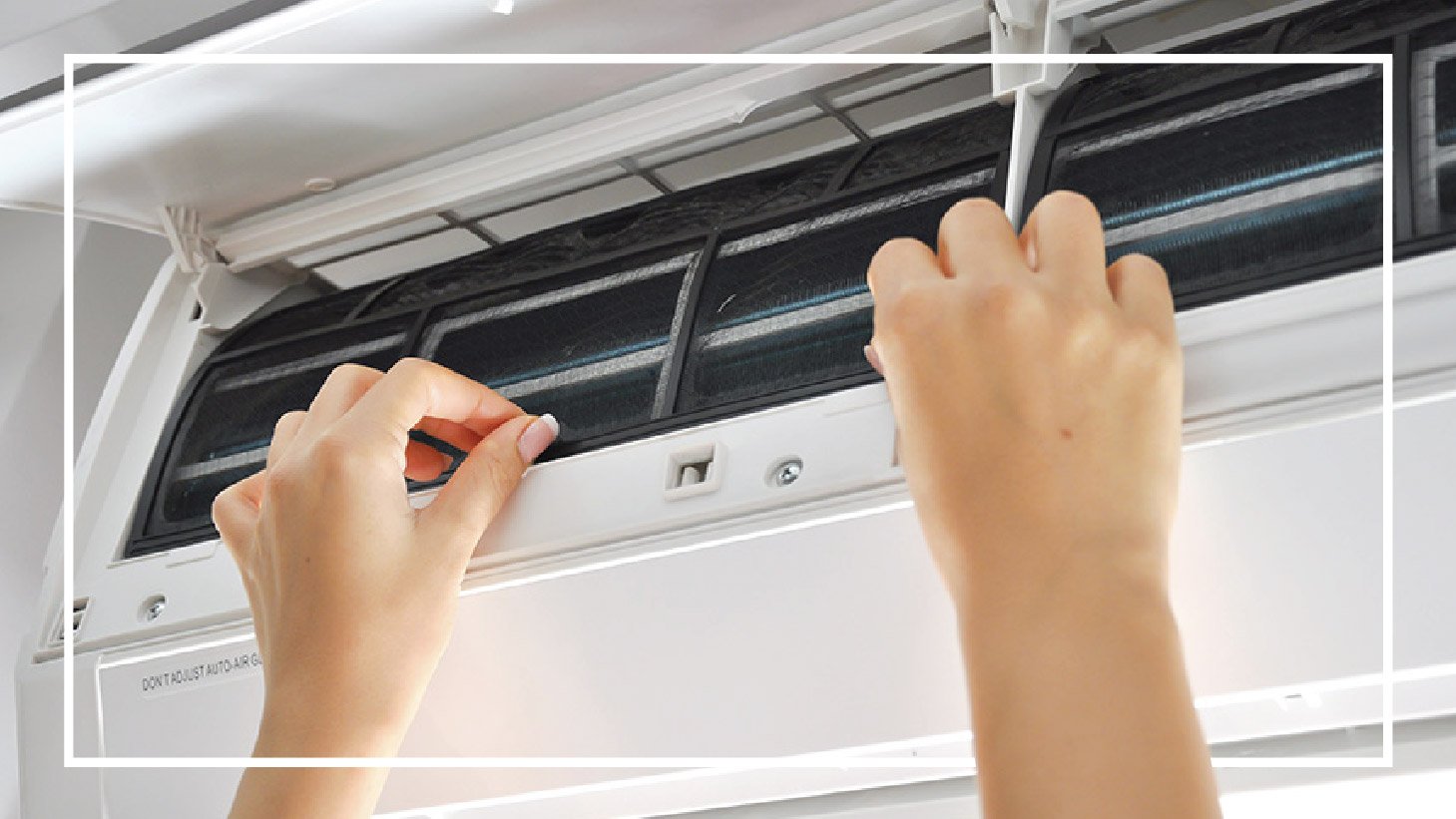Heat Pump Maintenance
10 Tips to Get the Most from Your Ductless Heat Pump
10 Tips to Get the Most from Your Ductless Heat Pump
Author: Bill Hoelzer / Read Time: Six Minutes
Ductless heat pumps are among the most effective and efficient ways to keep your home comfortable, and they’re easy to operate.
That said, they operate differently than traditional HVAC systems - like furnaces and air conditioners. Here you’ll find the top 10 tips to maintain your ductless heat pump and get reliable, energy efficient performance for years to come.
If you have questions about a heat pump or ductless heat pump installed by GreenSavers, please feel free to give us a call anytime. We're here to help: 541.330.8767.
#1. Choose HEAT or COOL Mode (Not AUTO)
You may be tempted to choose the AUTO mode of operation for your heat pump. Set it and forget it, right? Not quite. Choosing the AUTO mode could cause your system to toggle back and forth unnecessarily between heating and cooling modes. This wastes energy and runs up your electricity bills.
Instead, put your ductless heat pump in the HEAT mode for the winter months and COOL mode for the summer months. Please note! Your fan speed is a separate setting, and it’s totally fine to set your fan speed to AUTO. That’s actually what we recommend (more below).
Pro Tip: When you turn on your ductless heat pump or change the operation mode, don’t worry if it takes a little time. Just give it 5 to 10 minutes.
#2. Find the Best Temperature
For most ductless heat pumps, the thermostat measures the temperature from the indoor unit, not from the wireless remote. Depending on where your heat pump is located, you might need to adjust the temperature a bit higher or lower to feel comfortable. Don’t worry too much about the exact temperature setting on the controller - what matters most is that you feel comfortable.
#3. Keep the Temperature Steady
Ductless heat pumps are designed to adjust automatically to changing conditions in an energy efficient way. Once you find a temperature that feels comfortable, try not to change it too much.
Keep in mind that if you do make small changes, it’ll take a little while for the heat pump to adjust. And if you make bigger changes, the heat pump will respond slowly and gradually to save energy.
#4. Set the Fan Speed to AUTO
It’s usually best to use the “AUTO” fan speed setting on your heat pump instead of other settings like “QUIET,” “LOW,” “MED,” or “HIGH.” That’s because the “AUTO” setting is made to automatically adjust the fan speed for the best balance of efficiency and comfort. As conditions inside and outside change, the fan speed will change too. Pretty cool, right?
There may be times when you want to change the fan speed on your heat pump manually. For example, if you want to heat up a room quickly or warm up an area that’s not right next to the indoor unit, you could set the fan speed to “MED” or “HIGH.” And if you need things to be quiet (like if someone’s taking a nap or you’re watching a movie), you could set the fan speed to “QUIET.”
#5. Get to Know the Range of Your Heat Pump
Your ductless heat pump can probably heat and cool more than just the room it’s located. The whole area that the heat pump can effectively warm or cool is called the “effective zone.” The rest of your house outside of this zone is called the “secondary zone.”
The size of your ductless heat pump’s “effective zone” depends on a few factors - like the size of the heat pump as well as the efficiency and layout of your home. In general, you can make the “effective zone” bigger by opening doors between rooms and turning up the heat pump’s output by setting the fan speed to HIGH. This can help to make the “secondary zones” in your house more comfortable.
#6. Know What to Expect from the Defrost Function
When it’s really cold outside, the coil on your heat pump’s outdoor unit might get frosty. But don’t worry - your heat pump is made to defrost itself automatically.
When it’s in defrost mode, the indoor fan will stop and a light on the unit might turn on or blink. This is totally normal and you don’t need to do anything to stop it or change it.
You may see water around the outdoor unit when it's in defrost mode. That’s normal. You may also hear some unusual sounds from both the indoor and outdoor units, like whirring, clicking, or the sound of fluid moving. These noises can happen because of things like thermal expansion or the refrigerant moving around.
The compressor in the outdoor unit may also make more noise than usual when the fan isn’t running. After the defrost mode is done (about 5 to 15 minutes), your heat pump should go back to heating like normal.
#7. How to Handle Severe Weather
If the weather outside is really bad, your heat pump may not be able to keep the whole “effective zone” as warm or cool as you want. If that happens, you can try a few things to stay comfortable:
You could turn up the temperature on the heat pump;
Close doors to make the “effective zone” smaller; or
Use more backup or supplemental heat (especially in the “secondary zones”).
#8. Understand the Sounds (and Sometimes Smells)
Even though ductless heat pumps are usually pretty quiet when they’re running, they do make some noise. You might hear the fan on the indoor and outdoor units, the sound of the compressor changing frequency, clicks from electronic switches, or the noise of fluid moving around. All of these sounds are normal.
But if you see any error codes or if something doesn’t seem right, don’t hesitate to get in touch with GreenSavers for help.
Pro Tip: If you haven’t used your heat pump for a while, you might notice a smell when you turn it back on. You can usually avoid this by drying out the indoor coils after using the air conditioning. Some heat pumps have a special “coil dry” function to help with this. If yours doesn’t, you can run the system on “fan only” or in the COOL mode with the temperature turned all the way up for 30 to 60 minutes before turning it off. This will help dry out the inside of the unit and help fight microbial growth that would otherwise have a comfy place to grow.
#9. Keep Your Filters Clean
If your heat pump’s filters get dirty, it can make the system significantly less efficient and effective. Depending on your home and lifestyle, you may need to clean the filters monthly.
Don’t worry - cleaning the filter is quick and easy. Just open the front panel of the indoor unit and take out the filter screens. Use a vacuum cleaner (with the brush attachment) to get rid of any dust or dirt. Then put the filters back in, close the front panel tightly, and you’re done!
Pro Tip: You can also clean your heat pump’s filters by rinsing them with water. Just make sure to let them dry completely before you put them back in the unit.
#10. Make Maintenance Easy and Automatic
If you sign up for the GreenSavers Home Performance Plan, you’ll get a 23-point tune-up and maintenance check for your ductless heat pump twice a year - once in the fall and once in the spring.
If anything goes wrong with your system, you’ll get priority scheduling and a 10% discount on parts and labor. Everything comes with a 100% satisfaction guarantee. Call or text to get started: 541.330.8767.
Learn More about Heat Pumps
Start by visiting our resource pages for homeowners in Portland, Oregon:
And our heat pump resource pages for homeowners in Bend, Oregon:
You can also keep reading our latest blog articles about heat pumps and ductless heat pumps.


















